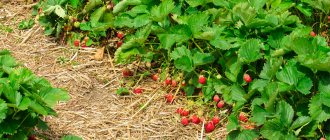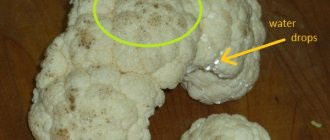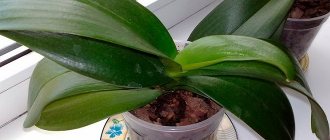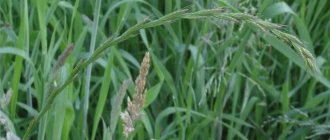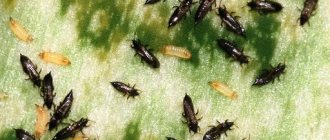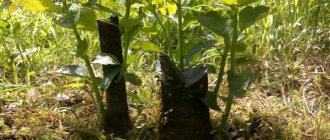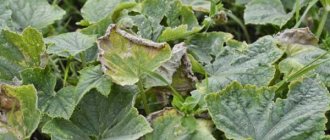- Wild animals
- >>
- Mammals
Such a cute and cute rodent as the prairie dog is increasingly joining the list of pets. This is not surprising, because petting such a charming fluffy is very pleasant, and watching him is even more interesting. Let's try to characterize the prairie dog from different angles, considering not only its external characteristics, but also its disposition, food preferences, places of permanent residence and lifestyle in general.
Origin of the species and description
Photo: Prairie dog
The prairie dog is a rodent belonging to the squirrel family. This family is quite extensive, including animals of various appearance and lifestyle, which are united by a common origin and some identical features of the anatomical structure.
All squirrel relatives are divided into three types:
- wood squirrel;
- flying squirrels;
- ground squirrels.
Ground-dwelling squirrels include prairie dogs, whose name is translated from ancient Greek as “dog-mouse.” Externally, rodents are very similar to marmots and gophers. Then an involuntary question arises: “Why are they called dogs?” It turns out that it's all about the sounds they make, they are reminiscent of a puppy barking.
Scientists identify five species of prairie dogs, so in the vast prairies you can find:
- white-tailed prairie dog;
- Mexican prairie dog;
- Gunnison's prairie dog;
- black-tailed prairie dog;
- Utah prairie dog.
It is almost impossible to immediately determine by external features what type of prairie dog is in front of you, because they are all identical, they are distinguished by some morphological characteristics, for example, the structure and size of the teeth. The differences also lie in the variety of sounds produced, which are different for each species. The tips of the tails of the Mexican and black-tailed dogs are black, while the tips of the other varieties are white. Differences between species also appear in their life activities, but this does not affect external data in any way, so only an experienced and knowledgeable specialist can accurately distinguish between species.
How to protect your garden from other pests
This section of the article describes how to protect your garden from pests such as moths, slugs and bean aphids.
Moths.
People call moths moths. These are insects belonging to the butterfly family, which has 2,000 genera and more than 23,000 species.
As you can see in the photo, these garden pests have a weak, thin body and wide wings, the span of which reaches an average of 15-40 mm:
The flight of butterflies occurs mainly at night, but some fly during the day. The pest's caterpillars are colored to match the color of the bark and leaves, which gives them the opportunity to camouflage themselves as petioles and broken twigs. They feed on the leaves and ovaries of pear and apple trees. In addition, caterpillars have false legs, which gives the impression that when insects move, they measure the distance they travel with a span. Hence the name of this pest.
Measures to combat these garden pests include digging up the soil, loosening it, spraying trees with a decoction of tobacco or yarrow grass, as well as using special paper belts to catch pest butterflies.
Slugs.
These pests cause significant damage to strawberries, as they infect the berries, eating away the pulp. The greatest activity of the pest is observed during rainy summers, when there is a high probability of formation of damp, shaded areas on the site. Slugs live under various shelters - lumps of earth, old boards. This is where they lay their eggs. The pest is afraid of light, so it leaves its shelter at night.
The main methods of combating slugs include agrotechnical ones. To protect the garden from these pests, first of all, it is necessary to carefully cultivate the soil, removing weeds that create a favorable microclimate for the development of the pest. In addition, small grooves near the plantings with ash, lime, ground hot pepper or tobacco dust sprinkled on their bottom can be a good help for the gardener. On the way to the plants, the slugs will climb into these grooves, but will not be able to get out of them.
Appearance and features
Photo: Mexican prairie dog
Let us note again that in all its appearance the prairie dog resembles a marmot. Its dimensions vary from 30 to 38 cm, and its weight is from one to one and a half kilograms (sometimes there are heavier specimens). Females are smaller and weigh lighter than males. With such size and weight, the dogs look quite well-fed and have a dense build. Because of this figure, rodents look clumsy. Their body is massive, and their legs and tail are short.
The coloring of these animals can be called camouflage, because it blends perfectly with the surrounding area. The dogs' spine is dirty yellow or yellowish-gray, sometimes with some reddish tint. The abdomen has a lighter tone. The head, in comparison with the general tone of the body, looks darker. The face is decorated with whitish streaks, which are most noticeable on the chin and near the nose.
Video: Prairie Dog
Prairie dogs have a rounded head and a cute muzzle with large, dark, wide-set eyes that tirelessly scan the surroundings. The ears of rodents are so tiny that they are almost invisible under the fur. Dogs have rather large cheek teeth and narrow incisors located on the upper jaw. If necessary, food is loaded into the cheek pouches, like in string bags.
On the short paws of rodents, rather tenacious fingers with long claws, which are very sharp and strong, are visible. The third toe of the front paws stands out forward and is slightly longer than the others. It should be noted that although the legs are short, they are quite powerful, because they are adapted for digging very long underground labyrinths. The soles of prairie dogs' feet are covered with hair. The tail is colored to match the entire body, only in Mexican and black-tailed dogs it has a black tip. Its length can be from 4 to 11 cm.
Top 10 most dangerous garden pests
Enemy No. 1 - aphids: why they are dangerous and how to defeat them
Aphids are an insect that is equally dangerous for both the garden and the vegetable garden. The pest sucks the juice from leaves and fragile shoots, simultaneously poisoning the plants with poisons that cause their inevitable death. Aphids are carriers of infections and viruses; in the absence of timely eradication measures, they can destroy most of the crop, especially fruit in the garden.
You can and should fight aphids in the following ways:
- Mechanical - washing off the insect with a stream of water under pressure (not 100% effective).
- Treatment with an ash-soap solution both to combat and prevent the appearance of insects.
- Removing aphid carriers - ants - from the site.
- Tinctures based on plants with insecticidal properties (garlic, dandelion, sorrel, marigold, etc.).
- Decoctions of tobacco, celandine, yarrow, tansy, hot pepper, wormwood, etc.
- Planting aphid-repellent crops that can secrete phytoncides (mint, lemon balm, mustard, lavender, etc.) near the affected plants.
If none of the methods helps solve the problem, insect pests can be destroyed using chemicals.
Enemy No. 2 - moles: how to keep them away from the site?
At first glance, harmless and cute moles in the garden can become a real scourge if action is not taken. The animals dig through numerous tunnels at shallow depths, damaging the root systems of plants, spoiling flower beds and disrupting landscape design.
You can fight moles in different ways. There are humane options that involve scaring away animals with special repellers or removing them from the area using traps. More cruel methods involve the extermination of moles by chemical and mechanical methods.
Enemy No. 3 - whitefly: what harm does it cause and can it be destroyed?
Every summer resident knows that whiteflies are frequent garden pests, partial to a number of vegetable crops. The insect's favorite delicacy is pumpkin, cucumbers, tomatoes and squash. It is not difficult to detect whiteflies in a garden or greenhouse. Visually, these are small insects with a yellow body, two pairs of wings with a characteristic white waxy coating.
Whitefly larvae are pale green in color with an oval body, a small pile of hair and threads at the base of the abdomen. Adult females leave oviposition on the underside of the leaves in the shape of a ring. The larvae suck the juice from the leaves and contaminate them with excrement. The result is sooty fungus on the surface of the leaf and the death of the plant over time.
Chemical preparations considered to be the most effective against whiteflies are: “Aktofit”, “Gaupsin”, “Vermicide”.
Enemy No. 4 - flea beetles: what do they attack and how to fight?
Not everyone knows that miniature and almost invisible flea beetles are also considered pests of fields and vegetable gardens where white and red cabbage, radishes, radishes and turnips are grown. Having a body several millimeters in length, insects are capable of significantly harming crops by gnawing holes in the leaves and heads of crops.
They fight flea beetles by frequent watering, planting on a cloudy day and earlier than expected, choosing garlic and onions as neighbors for crops. The first signs of the appearance of fleas should be a signal for quick action. As an option, you can prepare a simple tincture of garlic, tomato leaves and a spoon of soap for spraying, or a well-known pest control agent based on dandelion roots and leaves for spraying crops.
Enemy No. 5 - the worst pest, the Colorado potato beetle
A dangerous beetle that pests potatoes, as well as tomatoes, peppers and eggplants is the Colorado potato beetle. Adults are quite large with a bright orange-yellow body covered with longitudinal black stripes. Beetle larvae completely eat up the leaves of crops, so at the first sign of the appearance of a pest, you need to take action.
You can fight the scourge using a proven mechanical method, collecting beetles and larvae by hand, and destroying the oviposition. Additionally, after completion of assembly, the plants are treated with a tincture of wood ash, liquid soap and crushed wormwood tops, mixed with hot water and infused for several days.
Ready-made insect control products are “Akotfit” and the specialized “Coloradotsid”.
Where does the prairie dog live?
Photo: Prairie dogs
Prairie dogs have a permanent residence on the territory of the North American continent, or rather, on the vast expanses of its prairies. Rodents occupy an area stretching from the southern part of the province of Saskatchewan, which is located in Canada, and further covers a number of US states.
So, prairie dogs can be found in:
- Kansas;
- Wyoming;
- North and South Dakota;
- Texas;
- Nebraska;
- Utah;
- Montana;
- Oklahoma;
- Colorado;
- New Mexico;
- Arizona.
Prairie dogs have taken a liking to Northern and Central Mexico. They prefer semi-desert and steppe landscapes, where there is no tall vegetation; it is not for nothing that they are called meadow landscapes; the presence of short or medium-sized grass is enough for them. A grassy expanse of arid plains near some water source is an ideal habitat for these squirrels. Dogs try to avoid excessively wet soils and lowlands. Animals were also seen in mountain ranges at an altitude of more than three kilometers. Prairie dogs live collectively in dug burrows, the corridors of which underground form entire labyrinth cities, where there are rooms for various needs.
Interesting fact: The labyrinths of underground tunnels can reach up to 350 meters in length, and go down to 5 meters in depth.
Now you know where the prairie dog lives. Let's see what she eats.
Fat - different
In the soil you can find fleshy, light-colored insect larvae rolled into half rings. They can be either harmful or relatively harmless, and the pest can be identified... by its legs!
Dangerous
Adult beetleworm larvae are quite large (depending on the species, from 1.5 to 7.5 cm in length), fat, curved like the letter “C”, yellowish-white with translucent intestines. Try to remember a good identifying feature of beetle larvae: the back pair of their legs is the longest.
Khrushchev larva.
Prevention. Weed control. Some of the beetle larvae die when the soil is compacted in the spring.
Fight without harm. Collection and destruction of larvae during soil cultivation. Daily shaking off cockchafers onto shields or gauze cloths and their subsequent destruction.
They do harm, but rarely
Bronzewort larvae are often mistaken for Khrushchev larvae, which is not surprising, since they are the closest relatives. True, the larvae of bronzes have all pairs of legs of the same length. Bronze beetles can cause harm in rare cases - sometimes these beautiful bronze beetles eat plant flowers, and their larvae cause bald spots on the lawn.
Harmless
Larvae of pill beetles and dung beetles.
When digging up an area, you can find greenish-brown or dirty white larvae with a clearly visible head and a body curved in the shape of the letter “C”, very similar to Khrushchev larvae, but with long front legs (Khrushchi have the longest hind legs ). These are the larvae of pill beetles and dung beetles. They do not harm plants!
What does a prairie dog eat?
Photo: Prairie dog in nature
Although prairie dogs look very well-fed and slightly clumsy, their menu is dominated by dishes of plant origin. The basis of the dog's diet is grass, but sometimes rodents feast on all kinds of insects, replenishing the supply of protein in the body. When searching for food, prairie dogs do not move far from their burrows.
Rodents snack on:
- flowers;
- seeds;
- foliage;
- buds and shoots of various plants;
- ripened fruits;
- nuts.
In places favored by prairie dogs, the grass becomes noticeably bald, and the soil is clearly visible. The dogs carefully thin out nearby vegetation that may block their view. Due to the fact that dogs act as food competitors to cattle, they often suffer from attacks from farmers who force them out of their inhabited areas in every possible way.
These cute rodents cannot be called thrifty, because... They do not store provisions for future use, and, like many rodents, they do not build pantries. Some species hibernate throughout the winter, and those that are awake eat almost any vegetation that is available during the winter.
In addition to fresh grass, mature prairie dogs living in captivity are treated to:
- nuts;
- vegetables and fruits;
- grain;
- hay.
In autumn, dogs happily eat fallen leaves. Their diet is very similar to that of guinea pigs.
Field dogs in Russia
At one time, the Internet literally exploded with reports that Russian residents were increasingly seeing field dogs in their dachas, but now we can say with confidence that this was a mistaken opinion. These rodents are not able to survive even in the central zone of Russia, let alone in Siberia. Water voles and hamsters, which also cause irreparable harm to agriculture, but have nothing to do with them, were mistaken for dogs. At the moment, the true culprits have been found, and the dogs have been completely rehabilitated.
Features of character and lifestyle
Photo: Mexican prairie dog
Prairie dogs are social and very sociable animals, living in large colonies that can contain several thousand furry inhabitants. Animals are active during the day, doing not only feeding, but also other daily activities. They, like marmots or gophers, love to stand on their hind legs and monitor their surroundings.
The colony of dogs is divided into families consisting of a pair of males, several females (from 3 to 5) and cubs, ranging from six to thirty pieces. Family ties between dogs are very warm and close; the animals can often be seen sniffing and grooming each other's fur.
Interesting fact: Each family has relative independence, so dogs vigilantly guard their possessions. If a stranger appears, a conflict situation arises. The winner of the dispute can increase his land allotment, but not by more than one meter.
As noted, underground prairie dog sites are very intricate, deep, and extensive. They go down to a depth of three to five meters and are about fifteen centimeters in diameter. The equipped dungeon is very reliable and protected from landslides and flooding.
Interesting fact: In underground labyrinths, all rooms are specialized, some are used as bedrooms, others as birth chambers, others as rescue bunkers from all sorts of ill-wishers.
The dogs even have separately dug latrines, which, when completely filled, are buried with earth and new ones are built. The entire life of these amazing rodents is very thought out and well organized, each one minds his own business, fulfilling the duties assigned to him.
Among the dogs there are:
- guards ensuring the security of the fort;
- builders arranging and digging new corridors and repairing old passages;
- educators who train young animals and instill in them the necessary life skills.
In general, prairie dogs have very close contact with each other, showing sociability and good nature. They have a well-developed system of various sound and gesture signals designed for various situations. They can be described as peaceful, friendly and caring creatures with close family ties.
Interesting fact: The ritual of the so-called “kiss” speaks about trust in family relationships, when the closest relatives touch with open mouths as a sign of love and respect.
The black-tailed prairie dog is awake all year round; it does not hibernate; it actively moves even in the snow. The remaining dogs are in a state of winter suspended animation from the end of August to March, so they actively gain weight before hibernation.
Pests of potatoes, tomatoes, peppers and eggplants
Here are the most common pests of nightshade crops. These insects can also harm other plants, but most often they can be found in beds with potatoes and tomatoes.
| Pest | How to recognize | Control measures | |
| Potato nematode (golden, pale) | The potato bush droops, the stems quickly turn yellow, and the tubers become smaller. | Biological Growing pest-resistant potato varieties (Fresco, Diamond, Scarlett, Picasso, etc.). Chemical Nematophagin. | |
| Potato moth | The pest entangles the stems and leaves of plants with a web, after which they die. Moves and wormholes appear in the tubers. | Biological Spraying with Lepidocid (20-30 g/10 l of water). Potato bushes are hilled higher and more often, and the crop is harvested before the tops dry out. Chemical Spraying plants during the growing season with Inta-C-M (1 tablet/10 l of water). | |
| Tomato leaf miner | Burrows are found in the stems, leaves and fruits of tomatoes, peppers, potatoes and beans. | Biological Pest butterflies are caught using traps. Light and pheromone traps are effective. Plants are treated with Bitoxibacillin (70 g per 10 liters of water). Neem tree oil is effective. Also, predators are released into the garden for control: the trichogramma wasp and the horse fly bug. Chemical During the growing season, plants are sprayed with Aktara, Confidor Extra, Tanrek according to the instructions. | |
| Tomato scoop (karadrina) | A large number of small, irregularly shaped holes are found on the leaves of potatoes and tomatoes. | Biological Pheromone traps are used. Entomophagous insects are used. To attract them to the site, nectar-bearing plants (phacelia, anise, etc.) are planted. Plants are treated with drugs:
Twice a week, the affected bushes are sprayed with a decoction of wormwood (boil 500 g of herb in 3 liters of water for 15 minutes, then cool). Chemical Spraying plants during the growing season with Helikovex (2 ml/100 sq.m). | |
| Tomato rust mite | Brown spots appear on tomato leaves on both sides (darker on the underside), and the edges curl. The fruits crack and cork tissue forms on the surface. The stems of the bush also darken and, when severely damaged, appear fluffy. | Biological A predator mite (Neoseiulus cucumeris) is released into the greenhouse. After the crop is harvested, the tops and other plant debris are destroyed. Chemical Spraying plants with preparations - Aliot, Apollo, Fufanon-Nova (13 ml per 10 liters of water). Treatments are stopped 30 days before harvest. In total, no more than two treatments are carried out per season. | |
| Yellow potato flea beetle | Damages the skin of potato leaves. Many characteristic holes or pits appear on them. | Biological In the fall, deep plowing of the soil is carried out and crop rotation is observed. Marigolds, nasturtium, and calendula are planted next to the crops. Early ripening varieties are treated weekly with tobacco or ash infusion. Chemical Spraying plants with Komandor according to instructions. | |
Social structure and reproduction
Photo: Prairie Dog Family
Little is known about the reproduction of prairie dogs. They become sexually mature closer to the age of three. The wedding season for these rodents occurs once a year, and if fertilization is successful, then the parents have offspring. The duration of pregnancy is from 28 to 32 days, childbirth usually occurs in the spring (April - May).
The number of newborns varies from two to ten babies. They are born completely helpless, naked and blind. A little more than a month later, they begin to see clearly. At seven weeks of age, babies gain independence and begin to make forays out of their burrow. During this same period, they stop feeding on their mother’s milk and switch to a plant-based diet.
Interesting fact: In dogs, mature individuals often leave their homes, leaving them for the young to live in, and they build new burrows nearby for themselves. This suggests that animals are very caring.
It is worth noting that older males form their own families, and young females often remain to live in the parental clan. Under natural conditions, prairie dogs do not live very long. Males are usually no more than five years old, while females live up to eight years. Tamed prairie dogs can live 11 years, because in captivity the environment is always favorable, and there are no external threats of any kind.
Pests of onions and garlic
Due to their specific taste and aroma, not all people will agree to eat these vegetables raw. But some pests – with great pleasure!
| Pest | How to recognize | Control measures | |
| Onion hoverfly | The leaves turn yellow at the tips and wilt. The bulbs give off an unpleasant odor and become soft. | Biological Every 4-5 days, the row spacing is weeded and loosened. The soil is watered with a urea solution: 1 tbsp is dissolved in 10 liters of water. fertilizers (consumption – 1 liter per 1 sq.m). Chemical Treatment with chemicals is only possible if onions (garlic) are not grown for feathers. In this case, Alatar is used. If the crop is grown for feathers, it is enough to water the beds with a solution of copper sulfate (5 g per 10 liters of water). | |
| Onion fly | The leaves begin to turn yellow and wither, the plants stop growing. The turnip softens and emits a specific smell. | Biological Maintain crop rotation (good predecessors for onions and garlic: peas, tomatoes, cucumbers, potatoes, green manure). At an early stage of damage, spraying plants is effective:
Chemical plants are treated with Zemlin (applied simultaneously with planting), Alatar (during the entire season). | |
| Onion cracker | The pest eats the edges of the leaves, and shiny eggs are found on the back of the leaf blade - first yellow, then brown. | Biological Eggs, larvae and beetles are collected by hand. Plants are sprayed with an infusion of larkspur or wormwood: 700 g of herb is poured into 10 liters of cold water, left for a day, then boiled for half an hour, cooled, diluted 2 times with water and a little shampoo is added. Chemical In the second half of June - early July, plants are sprayed with preparations Zubr, Komandor, Aktara, Tanrek. At a later date, the use of chemicals is prohibited. | |
| Onion sneaker | Yellow spots with indentations appear on the leaves. Later, strokes of the same color appear. | Biological The soil is regularly loosened to a depth of 7-10 cm, the rows are sprinkled with crushed red or black pepper (ash, dried celandine, tansy, mustard powder are also suitable). Chemical During the growing season, onions are treated prophylactically with one of the drugs to choose from: Alatar, Karbotsin, Inta-Ts-M or Fufanon-Nova. | |
| Four-legged garlic mite | The leaves of damaged plants curl along the midrib, bend in a loop, and turn yellow at the edges. Sores appear on the scales of the bulbs in the form of dark green or yellow spots. | Biological Maintain crop rotation. Use healthy planting material and remove weeds. Providing the necessary storage conditions for planting material and drying it before planting. Chemical Pre-treatment of empty storage areas with a sulfur smoke bomb before storing garlic for the winter. Climate. | |
| Onion stem nematode | Plants experience thickening and curvature of leaves, which subsequently turn yellow and droop. | Biological Removing plant residues at the end of the summer season. Destruction of affected plants. Selection of healthy planting material. Adding peat, leaf humus and river sand to the soil before planting. Chemical Cleaning and disinfection of crop storage areas. Application to the soil and pre-sowing treatment of seeds or bulbs with nematicide fumigants. Spraying plants with organophosphate nematicides. | |
Natural enemies of prairie dogs
Photo: Prairie dog
Peaceful prairie dogs are susceptible to attacks by various predators, both ground-based and feathered, carrying out air attacks. It’s not for nothing that these smart rodents chose to live in a collective environment, because it’s much easier to live this way in harsh wild conditions, where danger can lurk everywhere. Security dogs are constantly vigilant, constantly monitoring their surroundings in order to identify all kinds of threats that may come from:
- badgers;
- black-footed ferrets;
- coyotes;
- Mexican falcons;
- hawks;
- cave owls
A developed communication network among prairie dogs helps them not only communicate with each other, but also survive in various emergency situations. Smart dogs, with their voices and postures, not only report impending danger, but also clarify who exactly it is coming from, from which side the enemy is approaching, and how he does it. As a result of this alert, protective actions may vary depending on what kind of enemy is approaching (badger, hawk or coyote). Dogs can quickly hide, but be close to the exit from the hole, they can go deep underground, they can only move closer to the entrance to the hole.
Interesting fact: Zoological scientists compare prairie dogs with dolphins and primates due to their highly developed level of communication.
Danger to prairie dogs can also come from creeping reptiles. There is evidence that often undigested remains of these rodents were found in the stomachs of rattlesnakes.
Sadly, the worst enemy of prairie dogs is man, who exterminated the once vast populations of these squirrels. Farmers killed a huge number of prairie dogs, which, in their opinion, ate fields intended for grazing livestock. All this led to the fact that the number of animals became many times smaller, which is very sad to realize.
Earth dogs in the garden. Rodent pest "Chinese dog"
One of the most dangerous pests for gardens and vegetable gardens is the Chinese dog. This rodent belongs to the order of mice, but in body shape and size it more closely resembles a rat. The rodent causes significant damage to all garden plantings, because, like a mole, it digs the ground, leaving huge piles of earth on the surface of the ridges.
Appearance of the rodent:
- body length - 25 cm;
- weight - 500 g;
- tail length - 6-13 cm;
- coat color - gray, brown, black, with the presence of white or light gray stripes on the back or dark brown spots located over the entire surface of the body;
- The coat is smooth and thick.
The “Chinese dog” feeds on seeds, fruits, berries, root crops, the bark of young shrubs or fruit trees, and the juicy pulp of stem shoots. In a word, if a rodent settles in the garden, it will cause enormous damage to the crop.
The “Chinese or earthen dog” is a thrifty rodent; it prepares supplies for the winter, preferring to deposit fruits, roots and plant seeds in a burrow. In the summer, the rodent sets up burrows near ponds or any other natural waters; in the winter, it moves closer to houses and country houses.
Closer to the onset of cold weather, rodent pests can often be found in barns, country houses and even greenhouses. This furry animal surprises with its maneuverability - it can climb trees, swim beautifully, run fast, dig long and deep trenches and even jump.
Chinese dog minks are dug at a depth of 15-20 cm from the surface of the earth. The animal creates tunnels, a pantry, a nesting area, and a place for hibernation underground. If there are molehills in the garden, then the “Chinese dog” will take advantage of them.
Population and species status
Photo: Couple of prairie dogs
To trace changes in the prairie dog population in more detail, let's look at history. White settlers who appeared on the American prairies in the nineteenth century exterminated a considerable number of animals belonging to the local fauna. Then, many predators hunting prairie dogs died at the hands of people, which caused a huge leap in the direction of increasing the population of these rodents.
There is evidence that at the beginning of the last century, in an area of 1000 square kilometers, there were about one hundred million prairie dogs, which actively began to devastate cultivated fields and pastures. Farmers began to wage a fierce fight against rodents, destroying them in huge quantities, which greatly reduced their population and brought the animals to the brink of extinction.
Interesting fact: There is reliable data that is simply shocking, according to them, in 1905, the population of prairie dogs living in the vast expanses of Texas numbered approximately 800 million individuals, but at the end of the century there were only 2.2 million of them left!
So, the population of prairie dogs has decreased greatly due to barbaric human actions, and now its numbers gradually continue to decline, which is very worrying for many environmental organizations that are taking measures to save these amazing animals.
Pests of cabbage, turnips and radishes
But who can ruin the harvest of cruciferous crops if you do not take the measures described in the table below in time.
| Pest | How to recognize | Control measures | |
| Belyanki (cabbage, turnip) | The leaves of the plant are eaten away at the edges. There are visible depressions on the heads of cabbage in which the pest eggs are located. | Biological Eggs and caterpillars are collected from the leaves of the affected plant. After this, the cabbage is treated with mustard infusion (100 g of mustard must be dissolved in 10 liters of water, left for 3-5 days, then diluted with cold water in a 1:1 ratio). Spraying with Fitoverm preparations (16 ml/100 sq.m). Chemical Spraying with Kinmiks (2-3 ml per 4 liters of water). Treatment is carried out in dry, windless weather. | |
| Cabbage fly (summer, spring) | Usually at the end of July the cabbage stops growing and then dies. | Biological The beds are watered with a salt solution (200 g per 10 liters of water), and then sprinkled with ash. Also, the soil around the plants must be loosened regularly. Planting between the rows of cilantro, garlic, cumin, and mint will help. Chemical Adding Zemlin to the soil (to a depth of 10 cm) (3-5 g mixed with sand in a ratio of 1:5). | |
| Cabbage scoop | Many small, irregularly shaped holes appear on the leaves. | Biological Caterpillars and cutworm eggs are collected by hand and destroyed (the optimal time is morning or lunch on a cloudy day). Butterflies are caught on molasses or on night fires. Various Trichogramma are used to destroy eggs. Plants are treated with biological pesticides: Bitoxibacillin, Lepidocid, Fitoverm. For fall prevention, the beds are carefully dug up. Chemical Treatment of infected plants with Alatar, Kinmiks, Fufanon-Nova, etc. The procedure is repeated at intervals of 5-7 days; it is best to spray the plants in the evening on a dry day. | |
| Flea beetles (cruciferous, wavy, light-legged, black) | Between the veins of the leaves of cabbage, radish, turnip, radish, and daikon, bite marks (holes) are visible. Over time, the plants dry out. | Biological Marigolds, nasturtium, and calendula are planted next to vegetable crops. Early ripening varieties are treated weekly with tobacco or ash infusion. A solution of 9% vinegar (0.5 liters per 10 liters of water) and a decoction of tomato tops are also effective. The soil is pollinated with naphthalene (50 g per 10 sq.m.). Chemical Good results can be achieved with the help of drugs - Aktara, Alatar, Aliot, Karbotsin, Fufanon-Nova. | |
| Cabbage moth | So-called “mines” appear in the leaf blades of the plant and are eaten away by the pest’s caterpillars. | Biological In autumn, deep plowing of the soil is carried out. Completely destroy weeds and remains of cruciferous crops. Plants are treated with a solution of soap and ash, as well as wormwood infusion. Plants with a pest-repellent scent, such as lavender, are planted near cruciferous plants. Treated with Bitoxibacillin, Lepidocid and Fitoverm. Chemical Treatment with drugs Alatar, Antitlin, Herold. | |
| Cabbage aphid | The leaves of cruciferous plants lose color and curl. | Biological Weed control. Compliance with agricultural technology for cultivating crops. Chemical Treatment of plants with Aliot, Antitlin, Iskra according to instructions. | |
| Green rutabaga barid | Notches appear on the apical buds, leaf petioles and plant stems. Damage to the stalk inside the cabbage. | Biological Deep plowing of the soil in autumn. Complete destruction of weeds and remains of cruciferous crops. Compliance with agricultural technology for cultivating plants. Chemical Treatment with Kinmiks, Inta-Ts-M and Fufanon-Nova according to the instructions. | |
Harm to the garden
If “Chinese dogs” set up their burrows in the garden or near the garden plot, then this becomes a significant problem for the gardener. The rodent is a voracious animal and is capable of completely destroying a crop.
The pest prefers to collect root crops in gardens. It stores small potatoes, beets, carrots, and radishes for the winter; the rodent feeds on large root vegetables right in the garden. In addition to crop theft, the pest causes significant damage to plant crops by digging holes in the ground, destroying young seedlings and mature crops. On young shrubs and fruit trees, the Chinese dog chews off the bark, as a result of which the tree begins to dry out, become sick and may even die.
It is difficult to overestimate the damage that the Chinese dog can cause. The rodent is characterized by active fertility, and if its numbers increase, then almost the entire crop can suffer from the animal’s pests.
Rodent control must begin immediately as soon as the first signs of rodent parasitism appear. The breeding of the “Chinese dog” should not be allowed. To destroy the animal, you need to choose the most drastic measures, since only they will help preserve the integrity of the harvest.
Pest Control Methods
To get rid of an earthen rat, you need to make sure that this is exactly the rodent that does not allow you to work in peace on your site. Maybe your neighbor has become a mole. He is also capable of digging up the entire garden and vegetable garden and destroying the harvest. It is worth looking at a photo of an earthen rat and then deciding on methods of struggle.
There are different ways to solve the problem, depending on what the intended goal is: to completely get rid of the pest or to drive it out of your territory. The following methods are used for these tasks:
- mechanical – traps, traps, ultrasonic repellers;
- chemical – poisons and poisons for rats, toxic substances;
- animals on the site - cats, dachshund dogs;
- smoking;
- planting fragrant plants;
- filling holes with water.
Preventive measures
The main reason why a pest settles in a garden plot or country house is the availability of food in an accessible form. Therefore, to get rid of the pest, you need to work hard. If you follow useful tips, you can reduce the risk of a rodent appearing on your property several times. What should be done:
- Get a cat and a dog. These animals will help in the fight against rodents, scaring them away even with their smell.
- Regularly inspect your property for the presence of such rodents.
- Often play loud music on the street or dig several sticks in the area, hanging several tin cans on them. When exposed to wind, the jars will make loud sounds, which will repel pests.
- Frequently clean up the house, throwing out old, unnecessary things. A pile of junk attracts many parasites.
We suggest you familiarize yourself with How to make a donk with a feeder? 5 best montages
The water vole can cause a lot of harm if you do not start fighting it in time. It is important to choose the right way to get rid of the pest without causing damage to yourself, pets and plants.
Features of the earth rat
This pest is an excellent swimmer, so it can easily move in any conditions in search of food. In the autumn, he moves closer to country houses and household plots, where he can find food for himself without much effort. The ground rat is distinguished by enviable fertility: the female gives birth to her own kind 5 times in 1 year, in quantities from 2 to 14 tiny living creatures.
Given favorable conditions, the ground rat is capable of increasing its population to catastrophic proportions. In appearance, the earth rat is a fluffy and very attractive animal that belongs to the order of voles. This pest grows up to 25 centimeters in length, with the tail taking up half of its length. The animal weighs about half a kilogram and has a very variable color - from black to gray, with and without stripes of light colors.
The pest eats various root crops, tops, leaves, and also gnaws the bark of young trees. In addition, the water rat catches frogs, eats shellfish and hunts voles. In the summer, the rodent stays close to bodies of water, where there is enough food for them. Closer to winter, the pest moves closer to humans, settling in gardens or outbuildings. The water vole easily climbs trees in search of chicks and bird eggs.
The pest lives in hard-to-reach places, which are characterized by debris of old branches or unnecessary things. Among other things, the water vole builds pantries underground, where it stores food for future use. Therefore, its burrows represent many passages that are directed to pantries, to the nest, as well as to entry and exit points.
Chemical methods of killing rats
It is very difficult to drive a Chinese dog away from a summer cottage.
For many gardeners it becomes a real scourge. Experts recommend using traditional methods of rodent control - poisons, traps, traps. However, among the many characteristics of the animal, amazing cunning occupies a special place. He may not eat poisoned food and easily avoids traps. Another method of fighting is caressing and. These animals are happy to include water voles in their diet. Anyone can have a ferret, but they have a very capricious character. In addition, some cats and dogs also do not miss the opportunity to catch rodents, including Chinese dogs.
An amateur, hearing the phrase “prairie dogs,” will think that we are talking about a dog breed unfamiliar to him. In fact, these are rodents that are related to dogs by making a sound similar to barking when in danger.
Dog mouse - this is roughly how (taking into account the ancient Greek roots) the scientific name of the species Cynomys is translated. The rodents are members of the squirrel family, but they look more like marmots, both in appearance and in their habit of standing upright on their hind legs.
Appearance
An adult prairie dog grows to 30–38 centimeters with a weight of 1–1.5 kg (sometimes a little more), and males are always larger and heavier than females. The animal, indeed, is very similar to a marmot in the outline of its dense body and camouflage (to match the color of the area) coloring: the back is often dirty yellow or yellowish-gray with a lighter shade of the belly. The fur on the rounded head is somewhat darker than the general background of the body, and white streaks are noticeable on the muzzle, especially bright in the area of the chin and nose.
The rodent has large cheek teeth and relatively narrow upper incisors: if necessary, food is placed in small cheek pouches. Prairie dogs' ears are so compact that they are almost indistinguishable under their fur. The eyes are quite large, dark and wide-set, which allows for full observation of the surroundings.
Lifestyle
Prairie dogs are especially active during daylight hours - during the day they obtain food, arrange their homes, and communicate with relatives. Like marmots and gophers, they like to stand up on their hind legs to survey their surroundings.
Rodents' food supply is predominantly plant-based, but sometimes they treat themselves to animal protein by eating steppe insects. When going in search of food, they stay close to their burrows. The fact that prairie dogs have settled in the prairie can be seen in the fairly balding soil: rodents thoroughly thin out the grass growing on it so that it does not block the view.
Poisonous baits are the best method due to their ease of use (spread them out and you’re done), effectiveness, and speed of action. Also, many drugs are quite cheap and do not require preparation other than mixing with your favorite food. You can serve poison to rats mixed with bread, rice, cereals or other cheap but tasty food.
The first significant drawback is that beneficial animals and pets are often poisoned. This is more often observed with dogs, since cats eat bread less often. In addition, animals die not only from poisoned food, but also from dead rats, which, before death, get out to the most visible place.
The second disadvantage is that rats not only eat the poisoned food, but also store it underground in their tunnels. As a result, the poison permeates the ground, is transferred to the plants and we get poisoned fruits. To avoid such a dramatic chain, you need to comply with the norms for the consumption of poison per area of land.
1. Before giving poisoned food, you need to feed the rats, just like when fishing. For several days, give them the food with which you will mix the poison in the future.
2. After the first rats die, the remaining rats will understand that they can no longer eat dangerous food. Not only the base will have to be changed, but also the toxic ingredients.
3. You cannot constantly use the same poisons. The body of rats gets used to it very quickly and within a few generations individuals appear that are not susceptible to the poison used.
| Zookoumarin NEO | Nutcracker | Storm | Tornado | |
| Active substance | zoocoumarin and bromadiolone (both 0.005%) | brodifacoum 0.005% | brodifacoum 0.005% | triphenacin 0.015% |
| Form of poison | Granules | Briquette (15 g) in a bag | Soft briquettes | Grains |
| Package | 10kg | 200 grams | 8 kg | 10 kg |
| Consumption | 100 grams / 10m 2 | 2 briquettes per hole or 10m2 | 30 grams per hole or 10m2 | 30 grams / 10m 2 |
| Price | RUB 1,370 | 195 rub. | RUB 1,638 | 900 rub. |
Traditional methods are characterized by low effectiveness and side effects, but they do not require large material or time costs.
1. Gasoline. You can wet unnecessary rags with gasoline or kerosene and put a rag in each hole. A variation of the method is to pour a glass of fuel into each hole. The method gives results immediately, but has two significant disadvantages: you will also feel the smell; this method spoils the earth and groundwater.
2. Burn the tire. A bicycle tire is taken, cut into pieces and burned. Burnt rubber is placed in each hole. A less humane and smellier way. Works just as well as the previous one. This method does not spoil the soil, but the stench is noticeable. A variation of the method is to burn not a tire, but the carcass of a dead rat. The choice is not for everyone.
3. Plants. The method is similar to the previous ones, only now you need to prepare an alcoholic mint tincture. The plant needs to be crushed and left for about a month. The tincture is poured over all the rodent’s favorite paths and poured into each hole. A variation of the method is to scatter stems of wild rosemary or wormwood at the entrances to burrows. However, according to reviews, this method does not give results.
All of the above-described folk methods of struggle have one significant drawback - these are scaring techniques. After the smell from the product disappears, they will return to your site along with the older generation, in larger numbers.
“Someone is gnawing on root vegetables at my dacha! The evil bright little animal mercilessly eats them! We will be left without a harvest! “- readers of Berdsk News who have “six hundred square meters” have been complaining all summer.
The closer to the water, the more prairie, steppe, Chinese dogs (whatever they are called!) are more numerous. And there is only one concern: how to protect the harvest and eradicate these living creatures from their holes?! For comment, we turned to Viktor MATKO, chief physician of the branch of the federal budgetary health care institution “Center for Hygiene and Epidemiology in the NSO and in the city of Berdsk.”
Previously, the sanitary service dealt with the destruction of rodents, such as field and gray mice, various types of rats, hamsters... There are many agricultural pests, but I don’t know about the prairie dog that gnaws on potatoes and beets,” he explained. – We haven’t been doing this work for 6 years. Everything is farmed out to private companies for the extermination of rodents, of which there are 18 in Novosibirsk, one in Berdsk, and about 50 in the Novosibirsk region.”
We found out that in Berdsk, bait for rodent control and means for controlling household insects (cockroaches, bedbugs, etc.) are sold by a single organization called “Sanitary and Epidemiological Services”.
According to Victor MATKO, to successfully fight rodents, you need to know the biology of the species you are going to fight, and only then use “grandmother’s” methods or go to specialists for bait. There are, explains Viktor Nikolaevich, preventative, prophylactic and exterminatory measures to combat rodents.
Sometimes people complain that they spread poisoned bait, and there are even more mice. It turns out that this is how it should be, because bait is an additional food source. it appears, and the mice come out to “feed”, but over time they die. You just need to wait a little. To prevent rodents from entering homes, cellars, and basements, Viktor Nikolaevich advises keeping buildings in proper condition and removing all loopholes for their entry. Cover the ventilation holes with mesh and install protective canopies against rodents on the ventilation.
We invite you to familiarize yourself with Heating in a Brick House - Air, Radiator, Instructions, Masonry Tips
If the problem is the destruction of fruit trees by rodents, which during the winter end up being gnawed a meter from the ground, then it is best to wrap the trunk of each apple, plum, and pear tree with synthetic material in late autumn to the height of the snow cover (about a meter, or even higher). “Mouseproof”, as Victor MATKO puts it, the material can be polyethylene, a bag of sugar, nylon tights, etc.
In the reader's mail there are mentions that people plant thorn grass under apple trees, and the fabric for wrapping is doused with cat urine; it is no less “fragrant” than creosote. Moreover, wrapping the trunk will serve as reliable protection not only from rodents, but also from the piercing wind, which is no less destructive to the tree than the teeth of garden pests.
Quite recently, some animal appeared that digs up all the soil in the garden. Passes on rough ground approx. 10 cm, raising all the earth along its path. In some places, when viewed, burrows are discovered in the depths, larger than a chicken egg. Who is this and how to deal with it? (ed.) There are no mounds familiar to moles.




